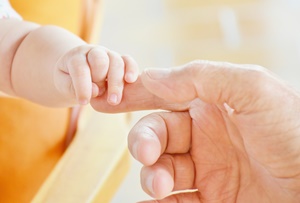October 16, 2020 by Robert Franklin, JD, Member, National Board of Directors

Our friends at Active Dads of Greece send us this story:
Alexander is the father of two young children. His ex-wife and mother of his children is Greek. The children were born in Sweden where they lived as a family at the time. The couple decided to divorce by consensus and the divorce was granted in Sweden, where the institution of joint and indivisible parental custody applies even after a divorce, which they successfully practiced for two consecutive years. In Sweden, the institution of alternating residence and equal time of children in two homes, mom’s and dad’s, also applies, with a weekly rotation in each home, maintaining the child’s permanent residence at the same municipality where the family used to live before the divorce; which also happened in the case of Alexander. That is, the parents, even after a divorce, are legally presumed to continue co-deciding on all issues relating to the upbringing of their children, such as health, education, place of residence. The well-being of children growing up in this context as well as their emotional balance, are at very high levels.
By mutual agreement, the ex-spouses and their children went back to Greece. The mother, knowing that in Greece the custody of the children is traditionally awarded solely to one of the two parents, and more usually the mother, made a fresh application to the Greek courts. After the involvement of the Greek Justice, the joint physical custody (shared parenting) arrangement was overturned, and custody was awarded solely to the mother of the children, who now makes all the decisions that concern the daily life of the children. In this way, the father no longer has any say in the upbringing, education and health of his children. In addition, the children’s contact with their father became problematic due to the institutional framework and the said decision of the Greek judge. It has become impossible for the father to access information about his children’s daily lives. He [is refused] information about his children regarding health, education, behavior, sociability, reactions, school, etc. He is often forced to ask for a prosecutor’s order, in order to be informed about his children’s health issues! The parents now live in different cities, and while the father has explored the possibilities of moving to the city where his children live, the Greek courts will not give him a substantial role in their upbringing, nor more time with them.
In short, children who were doing well under a shared parenting arrangement in Sweden had that arrangement destroyed by a Greek court and replaced with one that is less prone to promote their well-being. Why? Because Greek family courts very plainly know nothing of the science on parenting arrangements that are best for kids and have a pronounced pro-mother/anti-father bias. Active Dads of Greece wants that to change.
They have a good point. Not only does shared parenting promote the best interests of children except in unusual circumstances, it’s the plain intention of the European Parliament that, in 2015 passed Resolution 2079 that states, among other things,
Within families, equality between parents must be guaranteed and promoted from the moment the child arrives. The involvement of both parents in their child’s upbringing is beneficial for his or her development. The role of fathers with regard to their children, including very young children, needs to be better recognised and properly valued.
And,
Shared parental responsibility implies that parents have rights, duties and responsibilities with regard to their children. The fact is, however, that fathers are sometimes faced with laws, practices and prejudices which can cause them to be deprived of sustained relationships with their children. In its Resolution 1921 (2013) on gender equality, reconciliation of private and working life and co-responsibility, the Assembly called on the authorities of the member States to respect the right of fathers to enjoy shared responsibility by ensuring that family law foresees, in case of separation or divorce, the possibility of joint custody of children, in their best interests, based on mutual agreement between the parents.
And,
The Assembly wishes to point out that respect for family life is a fundamental right enshrined in Article 8 of the European Convention on Human Rights (ETS No. 5) and numerous international legal instruments. For a parent and child, being together is an essential part of family life. Parent–child separation has irremediable effects on their relationship. Such separation should only be ordered by a court and only in exceptional circumstances entailing grave risks to the interest of the child.
And,
Furthermore, the Assembly firmly believes that developing shared parental responsibility helps to transcend gender stereotypes about the roles supposedly assigned to women and men within the family and is simply a reflection of the sociological changes that have taken place over the past fifty years in terms of how the private and family sphere is organised.
Despite its membership in the European Union, Greece, through its family courts, almost uniformly ignores all of those aspects of Resolution 2079 and the others it sites.
The parallels to the United States are hard to miss. In Europe, as here, a child’s chances of maintaining real relationships with both parents post-divorce are fairly good in, say, Sweden and Belgium and terrible in Greece and Spain. Here, states like Kentucky, Arizona and Utah tend to respect the child’s rights far better than they do in, say, Texas and North Dakota.
Why should a child’s well-being (that’s so closely related to his/her parenting arrangement) depend on the vicissitudes of their state of residence that plainly have no bearing, except in the laws and practices of state courts? Substitute the word “country” for the word “state” and you’re asking the same question about Europe. The science on shared parenting isn’t state- or country-specific. But the practices of judges are very much so. It’s the kids who suffer.
















